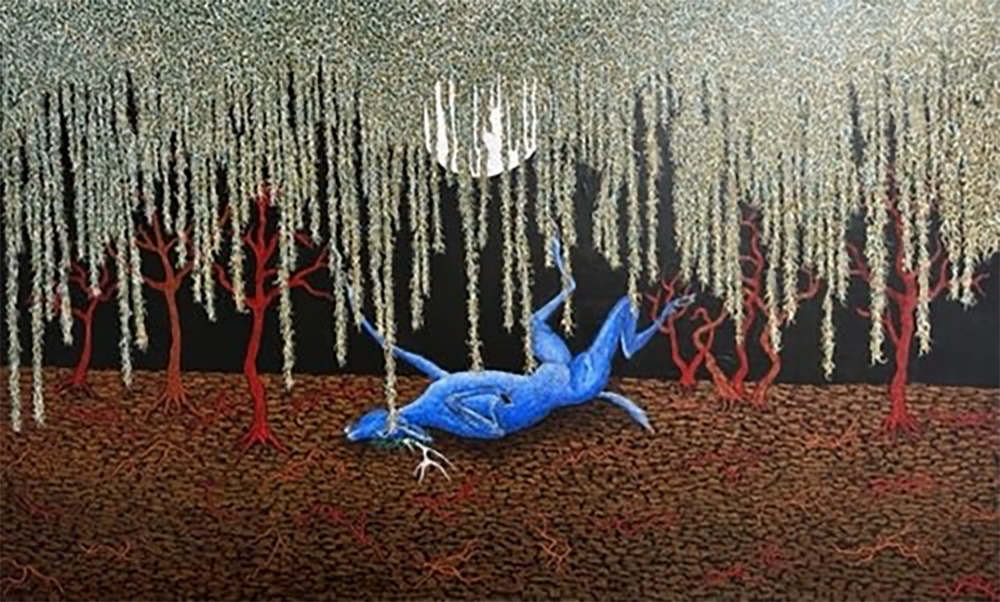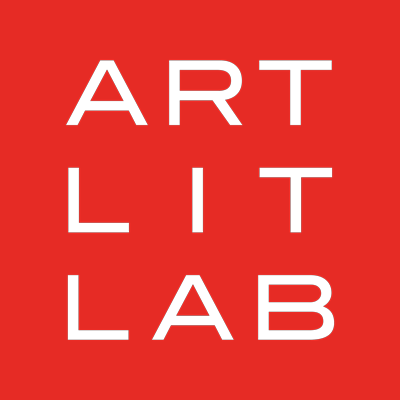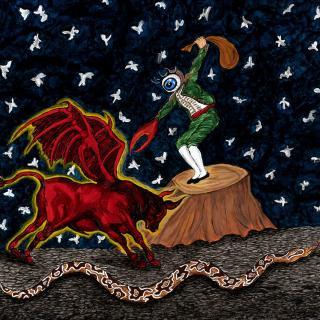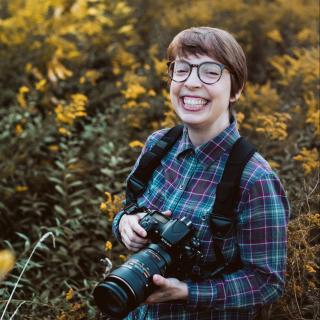Doug Fath is a Madison-based artist who received his MFA in photography from University of Chicago–Illinois in 1992. His work, which includes photography, drawing, and painting, has been exhibited in galleries in Chicago and Madison. His current focus on painting was showcased in Beautiful Loser, his exhibition at Arts + Literature Laboratory that was on display from March 17 to April 15, 2023.
ALL Review: What is your process of creating your work like? How has it evolved and changed over time?
Doug Fath: My work has changed over time and continues to evolve. I have a need to evolve. My process begins with reference materials, such as art books, photographs from my phone, encyclopedias, clip art, science illustrations–just about anything. It is difficult to explain in writing, because I am a visual person. Often an object or image will grab my attention, inspiring me to think about it further. I do a quick sketch and store it in my memory. I will look at or experience other objects that I feel relate to my initial sketch. Then, as I continue to work and sketch, a concept for a painting will emerge. Once I begin painting, I try to remain loose and open to different interpretations, and I allow the work to deviate from the original concept. Color is an important part of my process, and I attempt to use color in a strong, emotive way.
In my first serious body of work in painting, I used only black and white oil paints. This work [was] exhibited in a 2009 show entitled US Road Trip...My interest, at the time, was in a dispassionate or quiet objectivity that still allowed for different interpretations. Those landscapes reflected both isolation and contradictions.
In my exhibition, Beautiful Loser, I wanted to–and needed to–address personal pain, brought on by pandemic isolation as well as personal loss. I evolved in a completely different direction from my small black-and-white oil paintings. Instead of carefully rendering paintings based on my photographs, I began to explore painting in a surrealistic manner. At the same time, I began using color to reflect my subjective state. I now approach the canvas with a poetic heart, whereas my earlier work was documentary and more conceptual.

AR: Where do you seek inspiration?
DF: I find inspiration to be a strange word for an artist. I have influences, but the process of making art is work. It is not simply an automatic response to external inspiration (divine or otherwise). As far as my current focus, I do relate to artists who have examined personal pain. Frida Kahlo is one such artist, and I find her process to be inspiring. She continued working despite the obstacles she faced. She suffered in a tragic bus accident that debilitated her; she faced cultural hurdles. While our paths may be different, I find pain to be a universal language.
I had some inspiring experiences during the exhibition of my work in Beautiful Loser. The reactions by some people touched me. One artist told me that my work has inspired them to make new work. A number of people expressed gratitude to me for making myself vulnerable through my art. Others said that it gave them a feeling of connection and strength. One person, whom I did not know, sent me a comment saying, “Truly, one of the best exhibits I’ve seen.” My favorite is from my friend’s young son who decided to create a price/label sheet for his own artwork after seeing the show. Those are things that inspire me.
AR: How do you see your paintings contributing to the local art conversation?
DF: I believe that art needs to be both educational and inspirational. The conversation in the visual arts community in Madison, like any other community, changes over time. Due to historical inequities, there has been much work done around gender identity and race. This is important work about issues that are long overdue in being addressed.
My work gives the viewer permission to explore both pain and connectedness. My hope is that this can be freeing. To contribute to the local art conversation, I am attempting to talk with younger people, to let them know that they can go beyond teaching assignments and accepted norms. Recently, I spoke to local high school students in hopes of inspiring them. I would like to convey that it is okay to let your pain rip into your art. It is worth shedding light on these experiences, especially as the pandemic, racial violence, and societal pressures have affected the mental well-being of young people. of us all.


